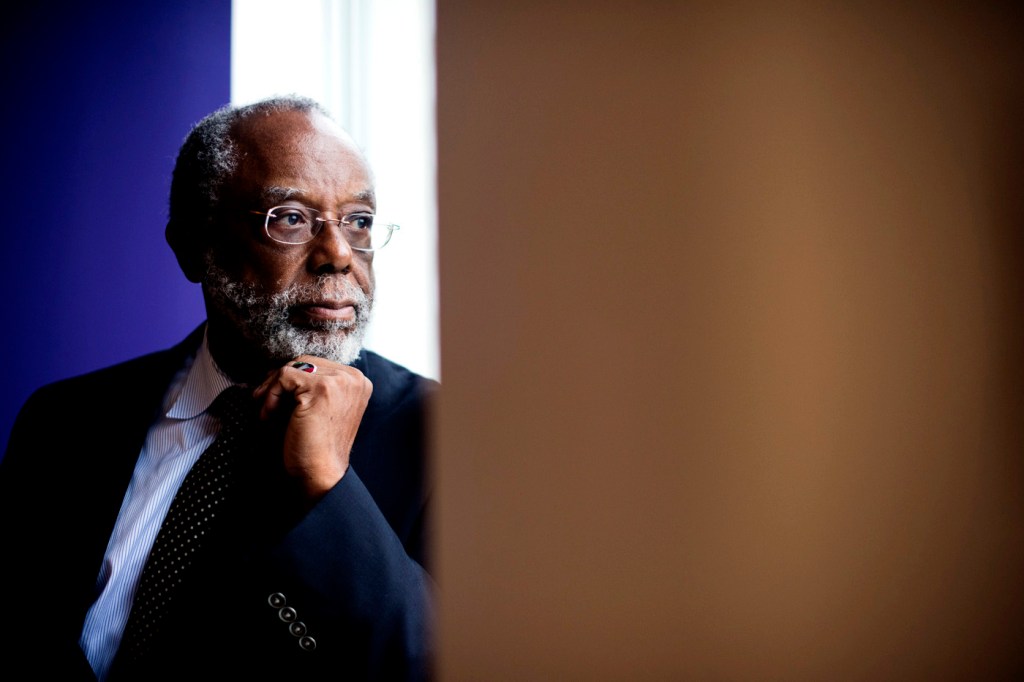Voices of Northeastern: Ted Landsmark

“We need to recognize that we’re at a point in history where we can make change. And we can make change because people of conscience, young and old, come together to speak truth to power and to battle against the disparities that have existed in our country for not just decades, but really for the entire history of America.”
If you have a story and want to share your voice, let us know at voices@northeastern.edu.
—
My name is Ted Landsmark and this is my voice.
I grew up in public housing in New York City in the 1950s during a period of time when periodically the local Black newspapers would publish photographs of individuals who had been lynched in the South, which was an appalling and disgusting sight for many of us to see. And during that period, it was also the case that we saw the beginning of demonstrations and other organizing activities to begin to bring attention to the gross disparities that existed between African-Americans and whites, not only in the South, but across the country. And so it seemed natural for me to become involved with civil rights activities that took me ultimately to the march on Washington. The march in Selma, Alabama, and a number of other civil rights demonstrations throughout the northeast and in the south. And at the time, there were demonstrators who were being hunted down and killed by some of the people who resisted those marches. But we knew that our cause of increasing voter registration, making it possible for people of color to be able to use restrooms and to sleep in hotels across the south that were at that time segregated was a righteous cause and one that needed to be addressed by those of us who were people of conscience. In looking back at that now, it’s clear to me that those demonstrations led to very positive results of Voting Rights Act was passed and a public accommodations act was passed. And throughout the South and in other parts of the country, we began to see the election of Black elected officials who could then change a number of policies and really begin to open doors to educational opportunities and to electoral opportunities and to employment opportunities in areas that had previously been segregated. I look today at the kind of demonstrations and activities that are taking place. And as a person who has had experience in this regard. I want to provide encouragement and support for people who have taken to the streets to protest police brutality and all of the health and economic and educational disparities and inequalities that continue to exist in this country. Demonstrations do, in fact, lead to results, and the results are really twofold. Some are legislative and relate to changes in budgets and public priorities. But the key is that demonstrations will raise the consciousness of people who’ve been complacent about instituting change in many of our social and cultural practices.
Complacency is the enemy of change. And as we look at the need for change in commercial real estate development, in the law, in finance, in who works in our universities and nonprofit organizations, who has been given opportunities to work in high tech firms, we realize that we need to move from demonstrations that are primarily directed at changing public policies to demonstrations that also change attitudes in the private sector. Demonstrations that engage a wider range of people in demonstrations that keep alive the sense of hope that in fact, change is possible. Looking forward, we need to engage as many people as possible in participating in census activities and in registering to vote and in actually participating in the kind of public change that will reduce and ultimately eliminate police brutality and lack of access to public resources. And at the same time, we need to recognize that the private sector, in terms of all of the many employers who have been able to hide their internal discrimination policies in ways that have prevented people of color and women from accessing managerial positions where real change can be made. We need to recognize that we’re at a point in history where we can make change and we can make change because people of conscience, young and old, come together to speak truth to power. This is a moment for great change, and I applaud and support the efforts of participants in demonstrations. And actions that are designed to highlight disparities and to bring about lasting commitments to change in the United States.





